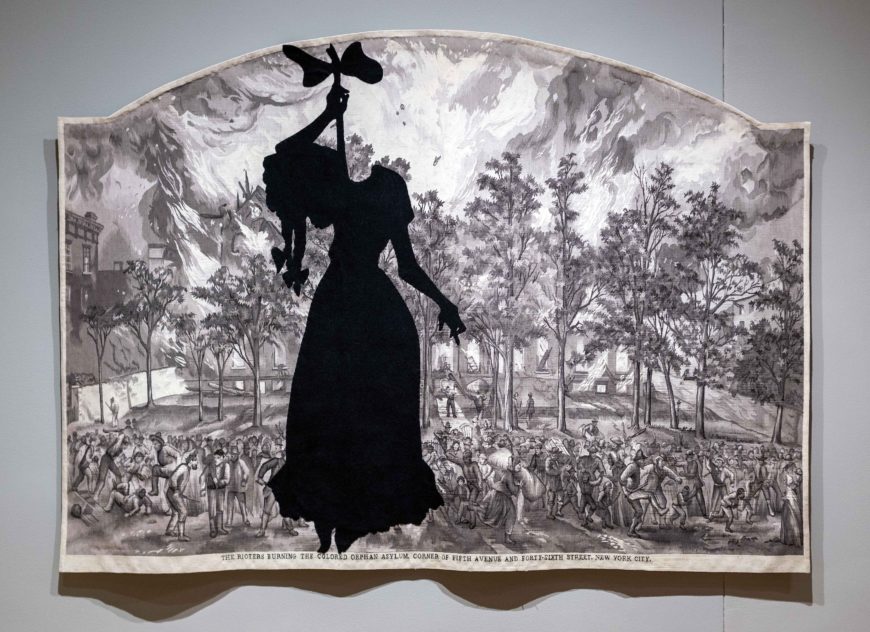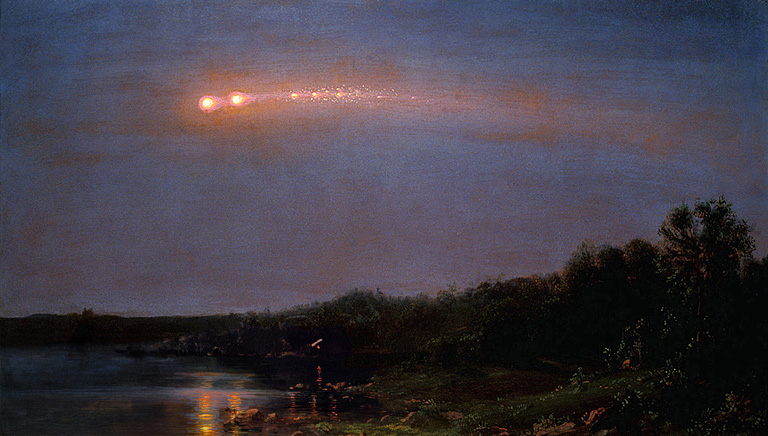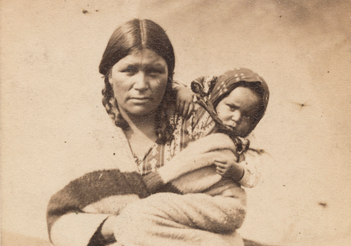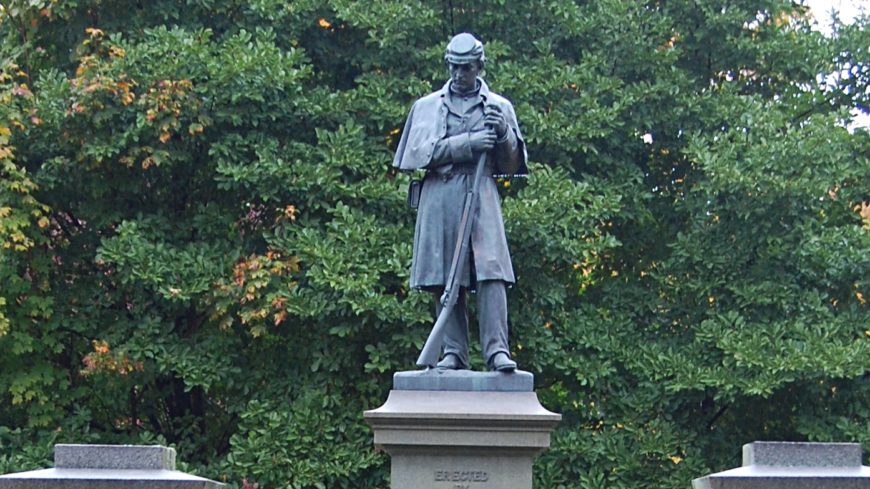Curated Guides > Thematic Series > The U.S. Civil War in Art
The U.S. Civil War in Art
The U.S. Civil War in Art is a collection of essays and videos that strives to recapture the immediacy of the war, engaging with the paintings, popular prints, photography, and material culture that reflect the experiences of those who lived through the war and the visual culture that has shaped our understanding of the war ever since.
This resource was created with the generous support of the Terra Foundation for American Art.
Though the Civil War began in 1861, its roots go back decades and its effects are still felt today.

Kara Walker, A Warm Summer Evening in 1863, 2008, wool tapestry and felt, 175.3 x 248.9 cm (Crystal Bridges Museum of American Art, photo: Steven Zucker, CC BY-NC-SA 2.0) © Kara Walker
Historians today widely agree that slavery was the single most important cause of the Civil War. The essays and videos in this section follow the thread of slavery in art as it was sewn through ideas about freedom, westward expansion, and the political landscape, from the founding of the nation to the start of the Civil War.

Frederic Edwin Church, The Meteor of 1860, 1860, oil on canvas, 10 x 17.5 inches (Collection of Mrs Judith Filenbaum Hernstadt)
- “The Immediate Cause of the Civil War,” an introduction
- The problem of picturing slavery
- Images in a divided world
- Imagining the West, territorial expansion, and the politics of slavery
- David Drake, Double-handled jug
- William Wetmore Story, Cleopatra
- Hiram Powers, The Greek Slave
- Seneca Village: the lost history of African Americans in New York
- Richard Caton Woodville, War News from Mexico
- George Caleb Bingham, Country Politician
- Samuel Colman, Jr., Ships Unloading, New York
The Civil War occurred over a vast country and involved a diverse population, so that capturing “the experience of the Civil War” is an impossible task: there were as many experiences as there were people who lived through it.

Joel Emmons Whitney, Sioux woman and child at the prison camp at Fort Snelling, carte-de-visite, c. 1862–63, 10.1 x 6.2 cm (Minnesota Historical Society, Saint Paul)
- Experiences of the U.S. Civil War, an introduction
- The work of war
- Homes and families
- Refugees, prisoners, and displacement
- Winslow Homer, Army Teamsters
- The U.S. Civil War, sharpshooters and Winslow Homer
- Little Round House
- Timothy O’Sullivan, A Harvest of Death
- Eastman Johnson, A Ride for Liberty — The Fugitive Slaves
- John Quincy Adams Ward, The Freedman
- Science, religion, and politics, Church’s Cotopaxi
“The most terrible thing about War, I am convinced, is its monuments—the awful things we are compelled to build in order to remember the victims.” —W.E.B. Dubois

Martin Milmore (sculptor) and Ames Manufacturing Company (founder), Roxbury Soldier Monument, Forest Hills Cemetery, Boston, 1867 (photo: Sarah Beetham, CC BY-NC-ND 2.0)
- Memory and commemoration of the U.S. Civil War, an introduction
- The Lost Cause and Confederate memory
- Abraham Lincoln and northern memory
- Defeated, heroized, dismantled: Richmond’s Robert E. Lee Monument
- Michelle Browder, Mothers of Gynecology
- Anna Pottery, Snake jug
- Lilly Martin Spencer, The Home of the Red, White, and Blue
- Nast & Reconstruction, understanding a political cartoon
- Monument Avenue and the Lost Cause
- Kehinde Wiley, Rumors of War
- Stone Mountain, Georgia
- Shrady and Casey, Ulysses S. Grant Memorial

 Open All
Open All Collapse All
Collapse All